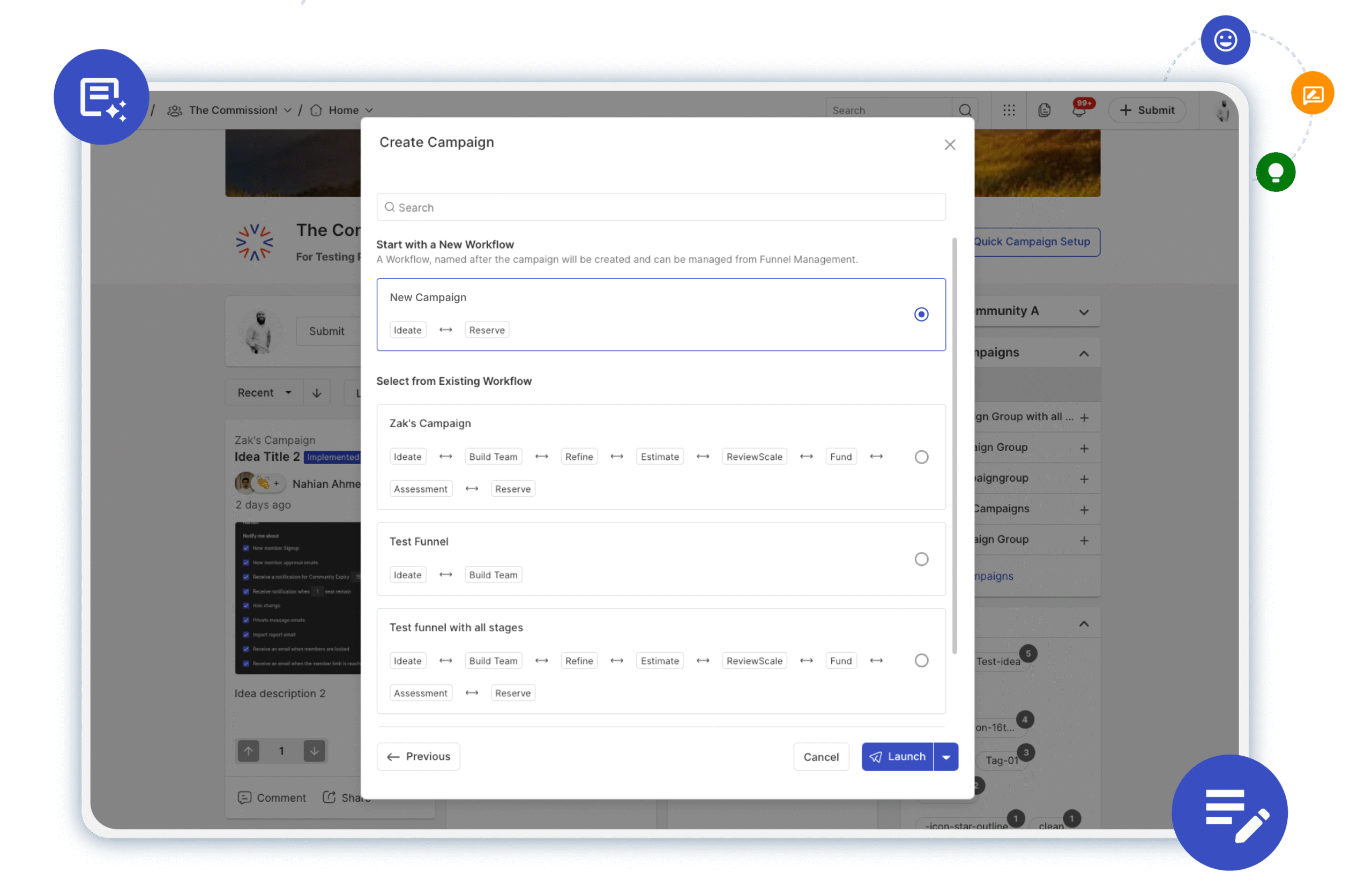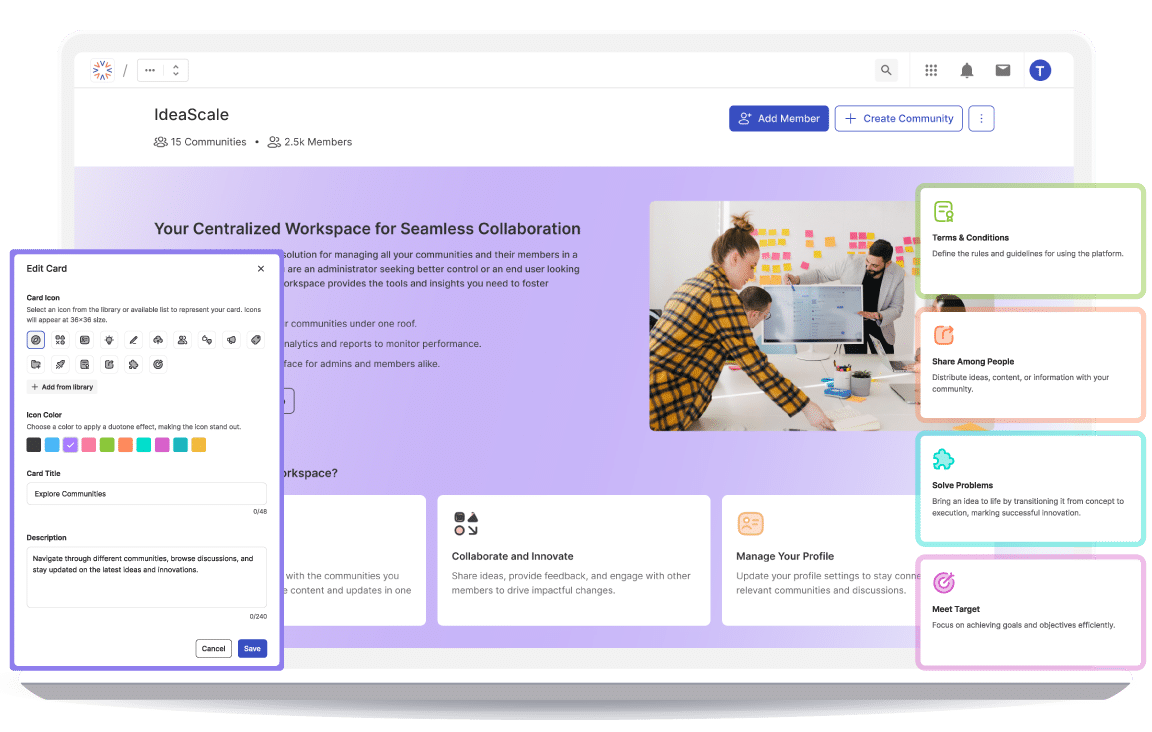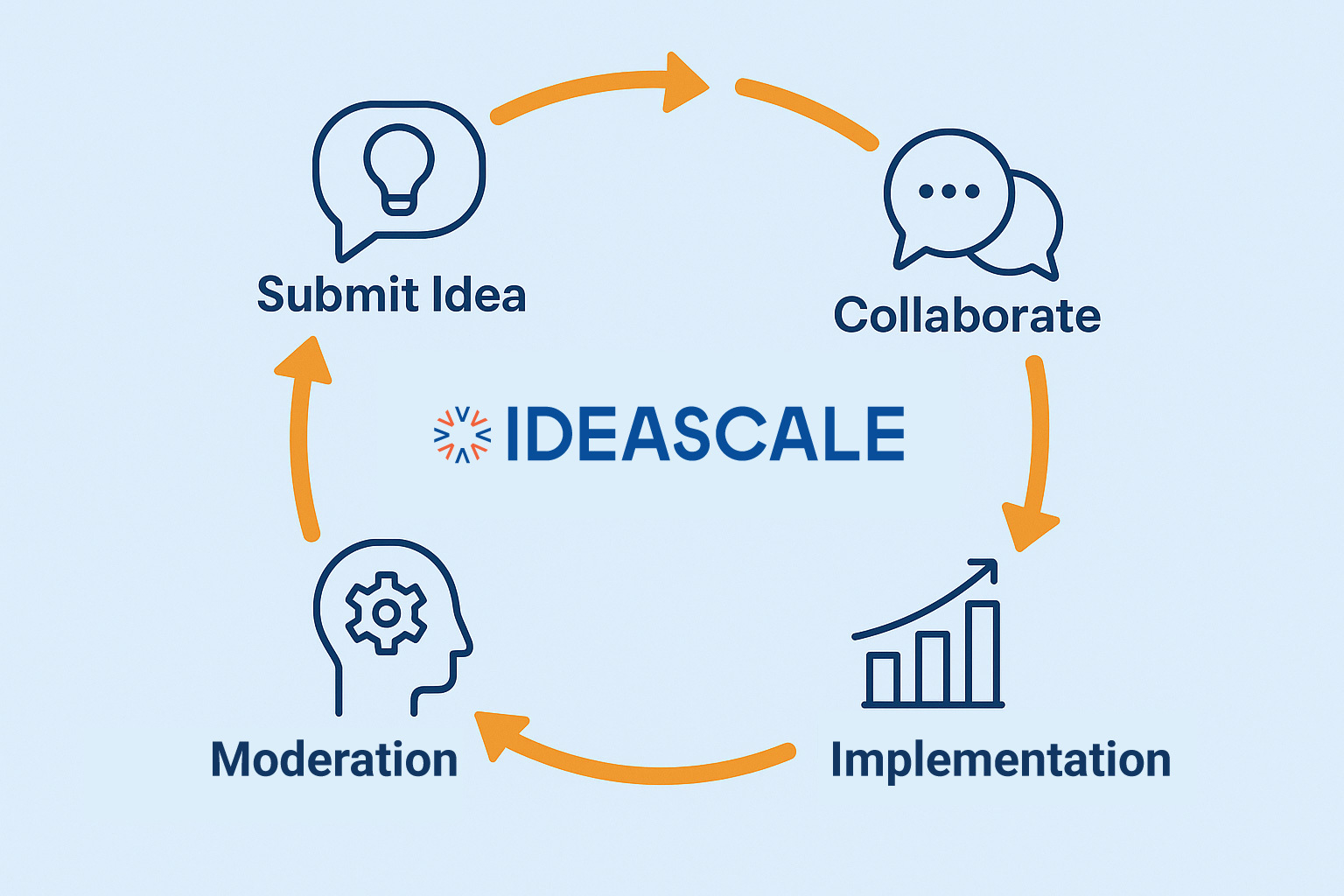Table of Contents
What is Customer Engagement?
Customer engagement refers to the interaction and communication between a business and its customers across various touchpoints. It’s about building a strong relationship where customers feel connected to the brand, which fosters loyalty and encourages repeat business. Engagement can occur through multiple channels like social media, email, live chat, and even in-person interactions.
When done right, customer engagement enhances the customer experience and drives long-term brand loyalty, increasing customer lifetime value (CLV) and overall business growth.
Key elements of customer engagement include:
- Communication: Effective communication is essential for customer engagement. This can occur through various channels, such as social media, email, phone calls, chatbots, and in-person interactions. Companies use these channels to provide information, answer questions, and gather feedback from customers.
- Personalization: Tailoring interactions and offers to individual customer preferences and needs can significantly enhance engagement. Personalization can involve customizing product recommendations, marketing messages, and customer service interactions.
- Feedback and Surveys: Companies often seek feedback from customers through surveys and reviews. This information helps them understand customer satisfaction levels, identify areas for improvement, and make data-driven decisions to enhance the customer experience.
- Loyalty Programs: Loyalty programs and rewards can incentivize customers to engage with a brand more frequently. These programs may offer discounts, points, or exclusive benefits to loyal customers.
- Content Marketing: Providing valuable and relevant content, such as blog posts, videos, and articles, can keep customers engaged and informed about a company’s products and industry trends.
- Community Building: Creating online or offline communities for customers to connect with each other and the brand can foster a sense of belonging and engagement. These communities can be on social media, forums, or through events and gatherings.
- Responsiveness: Timely responses to customer inquiries and concerns demonstrate a commitment to customer satisfaction. Companies that are quick to address issues and provide solutions can build trust and loyalty.
- Omnichannel Experience: Offering a seamless experience across various channels and touchpoints ensures that customers can engage with a brand in the way that is most convenient for them.
- Continuous Improvement: Companies should regularly assess their customer engagement strategies, gather feedback, and adapt to changing customer preferences and market dynamics.
Overall, effective customer engagement is a dynamic and ongoing process that requires a deep understanding of customer needs, consistent communication, and a commitment to delivering exceptional value to customers throughout their journey with a brand.
Why is Customer Engagement Important?
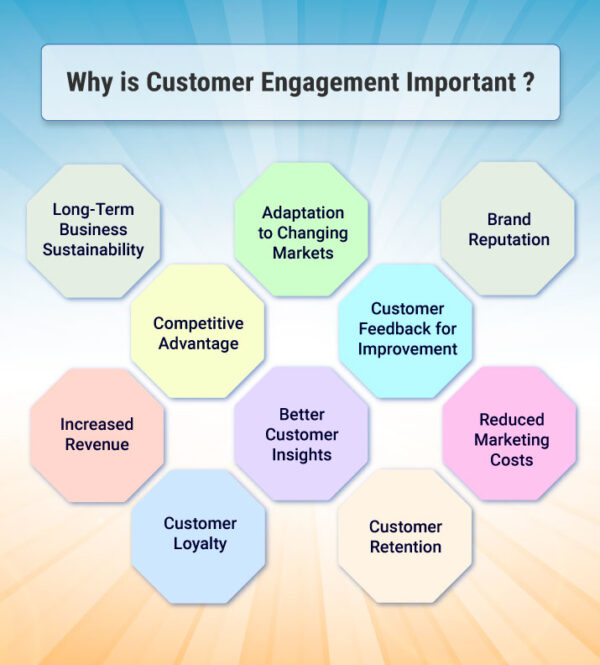
Customer engagement is critically important for businesses for several reasons:
1. Customer Loyalty: Customers who are actively engaged are more inclined to exhibit brand loyalty. When customers feel connected to a business, they are less inclined to switch to competitors. Loyal customers can become repeat buyers and advocates for your brand, which can lead to increased revenue and lower customer acquisition costs.
2. Increased Revenue: Engaged customers tend to spend more money with a business. They are more receptive to upsells, cross-sells, and premium offerings. Moreover, they are likely to recommend the brand to others, contributing to word-of-mouth marketing and referrals.
3. Customer Retention: Acquiring new customers can be costly, so retaining existing ones is often more cost-effective. Engaging with your current customer base helps reduce churn rates and maintain a stable revenue stream.
4. Better Customer Insights: Engaging with customers allows you to gather valuable feedback and insights into their preferences, needs, and pain points. This data can inform product development, marketing strategies, and business decisions, leading to more targeted and effective efforts.
5. Competitive Advantage: A strong customer engagement strategy can set your business apart from competitors. When customers have a positive and memorable experience with your brand, they are more likely to choose you over alternatives.
6. Brand Reputation: Engaged customers who have positive experiences can become brand advocates. They may share their experiences on social media, leave positive reviews, and recommend your brand to friends and family. This positive word-of-mouth can enhance your brand’s reputation and credibility.
7. Reduced Marketing Costs: Engaged customers are more receptive to marketing messages and are less likely to need extensive and costly persuasion efforts. This can lead to more efficient marketing campaigns and a higher return on investment.
8. Customer Feedback for Improvement: Engaging with customers allows you to gather constructive criticism and suggestions for improvement. This can help you refine your products, services, and processes to better meet customer expectations.
9. Adaptation to Changing Markets: Engaged customers can be a valuable source of information about evolving market trends and shifts in consumer behavior. This information can help your business stay agile and adapt to changing market conditions.
10. Long-Term Business Sustainability: Building strong, lasting relationships with customers is key to long-term business sustainability. Engaged customers are more likely to weather economic downturns with you, providing a level of stability to your revenue.
Customer engagement is not just about making customers feel good; it has a direct impact on a business’s bottom line, reputation, and ability to thrive in a competitive market. It’s an investment in the long-term success and growth of a company.
Learn more: What is Customer Feedback Management?
Customer Engagement Model
A customer engagement model is a framework that businesses use to define how they interact with their customers throughout the entire customer lifecycle. It focuses on maintaining continuous, meaningful interactions to build trust and create value for the customer. Some common engagement models include:
- The Conversational Model
This model emphasizes two-way communication between the brand and its customers, often through channels like social media, live chat, and chatbots. It encourages ongoing dialogue, allowing customers to feel heard and valued.
- The Engagement Loop Model
In this model, businesses constantly engage with customers through a series of touchpoints, collect feedback, and use that information to improve products, services, and the overall experience. This continuous loop helps to refine customer interactions.
- Community-Driven Engagement
This model fosters customer engagement through the creation of communities where users can share their experiences, offer feedback, and interact with both the brand and other customers. Brands like Sephora and Harley-Davidson have used community engagement to strengthen brand loyalty.
Learn more: What is Customer Feedback Analysis?
Top 18 Customer Engagement Strategy
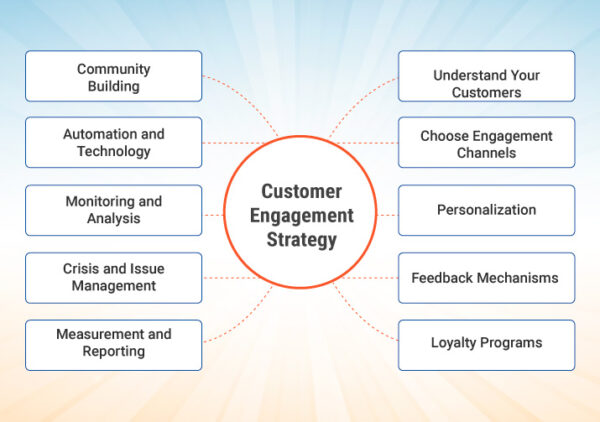
Developing a robust customer engagement strategy is essential for building and maintaining strong relationships with your customers. Below is a step-by-step guide to creating an effective customer engagement strategy:
1. Comprehensive Customer Understanding:
Start by delving deep into your audience’s psyche. Conduct meticulous market research to unearth their desires, pain points, and behaviors. Craft detailed customer personas representing diverse segments of your clientele.
2. Laser-Focused Objectives:
Define crystal-clear engagement objectives aligned with your overarching business goals. Whether it’s elevating customer retention rates or amplifying satisfaction scores, establish measurable targets to drive your strategy forward.
3. Strategic Segmentation:
Segment your customer base into finely tuned categories based on demographics, behavior, and purchasing history. This segmentation lays the groundwork for hyper-personalized communication that resonates with individual preferences.
4. Omni-Channel Engagement Channels:
Identify and harness the power of multi-channel communication avenues, including email marketing, social media platforms, websites, mobile apps, and SMS. Seamlessly integrate these channels to deliver cohesive brand experiences.
5. Value-Driven Content Strategy:
Craft a content blueprint overflowing with value-packed resources. From captivating blog posts to immersive videos and interactive webinars, provide content that addresses customer needs and fosters meaningful connections.
6. Hyper-Personalization:
Leverage cutting-edge data analytics and segmentation techniques to tailor interactions on a one-to-one basis. Deliver personalized product recommendations, marketing messages, and content that resonate with individual preferences.
7. Feedback Ecosystem:
Implement robust feedback mechanisms spanning surveys, reviews, and customer support channels. Encourage customers to voice their opinions and insights, laying the groundwork for continuous improvement.
8. Exceptional Support Infrastructure:
Elevate your customer support game with a responsive, empathetic team armed with top-tier training. Deliver exceptional support experiences across multiple channels, ensuring customer satisfaction remains paramount.
9. Loyalty Powerhouse:
Forge unbreakable bonds with your clientele through enticing loyalty programs. Offer exclusive rewards, discounts, and perks to incentivize ongoing engagement and foster brand advocacy.
10. Community Cultivation:
Nurture a vibrant community ecosystem through online forums, social media groups, and immersive events. Cultivate a sense of belonging among your customers, fostering deeper connections and brand loyalty.
11. Automated Efficiency:
Harness the prowess of automation tools and CRM platforms to streamline engagement efforts and maintain consistency across touchpoints. Empower your team to focus on meaningful interactions while automation handles the rest.
12. Analytical Mastery:
Dive into the depths of engagement metrics, from open rates to NPS scores, extracting actionable insights to drive continual refinement. Let data steer your strategy, unlocking untapped potential and driving exponential growth.
13. Iterative Optimization:
Embrace a culture of experimentation and innovation, constantly refining your approach based on performance insights. Stay ahead of the curve by testing new strategies and technologies to stay at the forefront of customer engagement excellence.
14. Empowered Workforce:
Equip your frontline staff with extensive training and resources, empowering them to embody your brand values and deliver exceptional customer experiences. Invest in ongoing education to keep them primed for success.
15. Crisis Management Protocols:
Anticipate and prepare for potential crises or negative feedback scenarios with clear protocols in place. Maintain transparency and professionalism in all communications, turning challenges into opportunities for growth.
16. Transparent Reporting:
Regularly communicate the impact of your engagement efforts to key stakeholders, leveraging data-backed insights to showcase progress and inform strategic decision-making.
17. Compliance Assurance:
Navigate the regulatory landscape with confidence, ensuring compliance with data protection laws such as GDPR and CCPA. Safeguard customer privacy and build trust through ethical engagement practices.
18. Continuous Learning Culture:
Stay at the forefront of industry trends and emerging technologies, fostering a culture of continuous learning and adaptation. Remain agile in response to evolving customer preferences and market dynamics.
Learn more: What is Customer Satisfaction Research?
Customer Engagement Marketing
Customer engagement marketing is a strategy that focuses on creating personalized and meaningful interactions with customers to deepen their relationship with the brand. Instead of just pushing products or services, engagement marketing centers on building experiences that resonate with customers and keep them coming back.
Key strategies for customer engagement marketing include:
- Personalization
Tailor your messages and offers to individual customer preferences, behavior, and needs. Personalized emails, product recommendations, and targeted ads can increase engagement significantly.
- Interactive Content
Content like polls, quizzes, and user-generated content encourages customers to actively engage with your brand, rather than passively consuming information. Interactive content also drives social sharing, expanding your reach.
- Loyalty Programs
Reward programs incentivize repeat business and create ongoing engagement with customers. Offering exclusive deals, rewards points, or early access to products can motivate customers to stay connected to the brand.
- Real-Time Communication
Tools like live chat, social media messaging, and SMS marketing allow for immediate and personalized customer interactions, building trust and providing instant solutions to customer queries or concerns.
- Content-Rich Campaigns
Engaging customers through valuable content, such as blogs, how-to videos, and educational webinars, can create meaningful interactions and foster a deeper relationship with your audience.
Top 5 Customer Engagement Examples
Effective customer engagement can take many forms, and the specific strategies and examples will vary depending on the industry, target audience, and business goals. Here are some customer engagement examples across different industries to inspire your own efforts:
1. Starbucks Rewards Program: Starbucks uses its mobile app to engage customers with personalized offers, reward points, and exclusive promotions. The app also allows customers to order and pay ahead, creating a seamless and engaging experience.
2. Netflix’s Personalized Recommendations: Netflix keeps its users engaged by offering personalized movie and TV show recommendations based on their viewing habits. This approach makes the customer feel that Netflix is delivering exactly what they want to watch.
3. Nike Run Club: Nike’s mobile app engages customers by allowing them to track their runs, share progress with friends, and access personalized fitness plans. The app also offers challenges and rewards to keep users motivated.
4. Amazon’s Customer Reviews: Amazon encourages customer engagement through its review system. Customers can leave reviews, ask questions, and share product experiences, creating a community-driven environment that enhances the shopping experience.
5. Sephora Beauty Insider: Sephora’s loyalty program, Beauty Insider, engages customers with a tiered rewards system, exclusive discounts, and the opportunity to attend events. Members are encouraged to interact with the brand both online and in-store.
Learn more: What is Customer Feedback?
Most Recent Blogs
Explore the latest innovation insights and trends with our recent blog posts.


